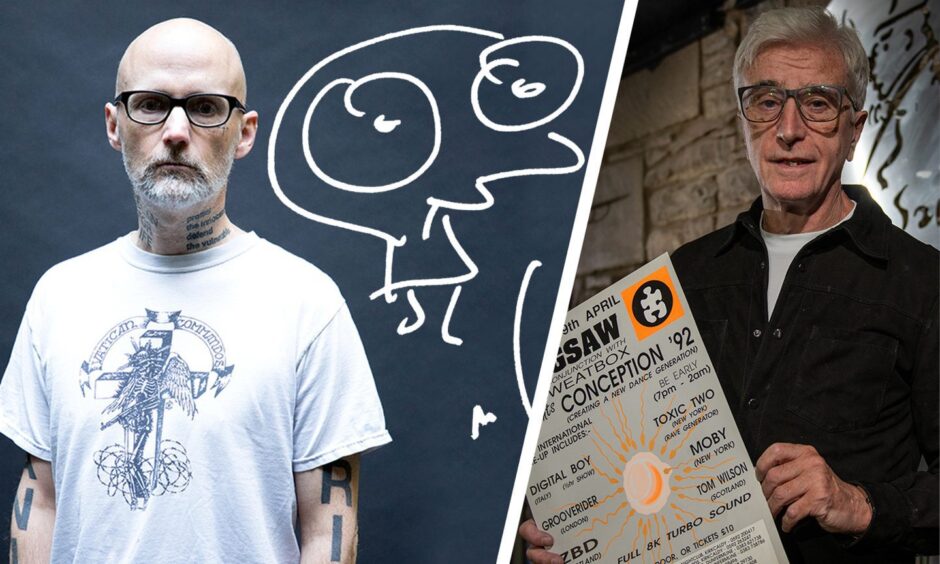
Superstar DJ Moby showed his talent for sketching after falling in love with Dundee Law while staying in a city tenement.
The black pen drawing reveals a lesser-known side of the electronic genius whose landmark album Play changed the music world 25 years ago.
Moby – real name Richard Melville Hall – started drawing cartoon characters on shopping bags in 1984 when he worked in a record store in Connecticut.
He began to DJ in New York City nightclubs in the late 1980s.
His 1991 breakthrough single, Go, became a club classic.
Showbiz fixer and Dundee nightclub owner Tony Cochrane was responsible for bringing a host of top stars to Dundee in the 1980s and 1990s.
Bros, Bananarama, Erasure, Rick Astley and Take That were among them.
Tony recalled being approached by Daniel Miller from Mute Records about bringing Moby over to perform in Scotland in 1992.
He wanted Moby to reach as many people as possible with his music.
Tony agreed.
Moby stayed in Constitution Street flat before Dundee and Kirkcaldy gigs
“I would bring them up and take them from club to club to get a fanbase in Scotland, which took time and energy in the days before social media,” Tony told me.
“Moby arrived from New York in April 1992.
“He looked quite different from how he looks today.”
Moby still had a full head of hair and was dressed in simple attire.
He performed for £400 a club including Fat Sam’s in Dundee and the Sweatbox event at Lido Nightclub in Kirkcaldy with tickets £12 on the door.
Sweatbox included a full international line up including Digital Box from Italy, Grooverider from London and the Toxic Two from New York.
Moby also performed in Aberdeen, Edinburgh and Glasgow and was put up in Tony’s flat in Constitution Street, where he got creative with a pen and paper.
“The Go single was huge on the rave scene,” said Tony.
“He wasn’t the household name he is today but was bubbling under the surface.
“He was kept busy when he arrived.”
Dundee Law was inspiration for sketch
He got behind the decks in Fat Sam’s on Saturday night for a performance that included tracks like Drop a Beat, Go, Help Me to Believe and Slight Return.
Moby went down a storm.
On Sunday he performed in Aberdeen, Kirkcaldy and Glasgow on Sunday from 3pm and was still delivering beats when the sun came up in Sauchiehall Street.
“Moby never complained and took it all in his stride,” said Tony.
“The response was great because the rave scene was exploding in the UK.
“Moby was a nice guy.
“He stayed in the flat I had in Constitution Street and had a great time in Dundee.
“He used to leave all these Post-It notes on the kitchen wall.
“The window gave him a nice view of Dundee Law and he was fascinated by it.
“He sketched a drawing of his DJ friends who were back in the States.
“They were on Dundee Law with Moby at the bottom.
“He left it behind for me before he went back to New York.
“I kept it as a souvenir of that weekend.”
It was great fun.
There was a caricature of “Bonnie Prince Moby”.
Scotland became “Scottoland”, which was a reference to the legendary DJ Scotto who is a founding father of the underground electronic dance scene in the US.
He signed the sketch “Moby 92”.
Did you go to an all-nighter at Bally’s?
“The tide was turning,” said Tony.
“The rave scene became huge and I loved the music.
“It probably hurt a lot of the nightclubs with neon lights reflecting on polished floors because all they wanted was a dark and dingy shed to dance in.
“We were putting on a weekly all-nighter at Bally’s in Arbroath before they changed the licence so we came up with a scheme to get past the red tape.”
People would go to Bally’s and pay the £10 entry fee where a DJ was playing.
They would be taken through the next door to the car park.
“A bus was waiting to take them to the real party in a barn outside Arbroath,” said Tony.
“They never paid anything when they got there and would have an amazing time.
“The back of a lorry was the stage!
“Everyone was sweating and the shirts were off.
“They were giving it everything and letting it go on the dancefloor.”
The good times kept rolling.
Tony brought The Prodigy to The Venue in Lochee’s Stack Leisure Park in September 1993 on their journey to becoming global superstars.
The Prodigy went interstellar in 1996 with the release of Firestarter.
Then came the Play album…
Tony continued to chart the fortunes of Moby, who followed 1992’s The Story So Far with Ambient, Everything is Wrong and alt-rock 1996 album Animal Rights.
Nobody bought it and he was at a career crossroads.
When he recorded Play, he was all but certain his career was over.
Play featured the singles Natural Blues, Porcelain and Why Does My Heart Feel So Bad and would go on to sell more than 12 million copies worldwide.
Courier Rocktalk writer Roddy Isles predicted Play would be a success when he reviewed the album in his column following its release in May 1999.
“Moby has just had two fairly special singles to raise a buzz around his new album.
“Again it is a buzz that is rewarded, with the eclectic American producing his most coherent work to date.
“He’s been digging through old Library of Congress field recordings from the early part of the century and has worked samples of them into a thoroughly modern setting, coming on like Fatboy Slim with an academic bent.
“The singles Honey and Run On are excellent, as are Find My Baby and Why Does My Heart Feel So Bad.
“The quality doesn’t dip notably anywhere through the rest of the record.”
Roddy gave the album eight out of 10.
Rolling Stone magazine ranked it one of the greatest albums ever made.
LA meal was a full-circle moment for Moby and Tony
Moby returned to these parts to headline the main stage at T in the Park in 2000.
He has since sold more than 20 million records worldwide and his song Extreme Ways became the soundtrack for the Jason Bourne series of action movies.
Tony has kept in touch with Moby since 1992.
He was invited for dinner at his vegan restaurant in Los Angeles in December 2016.
Moby presented Tony with a signed copy of his autobiography.
“Moby recalled his time in Scotland,” said Tony.
“He said how much he enjoyed playing in Dundee and Kirkcaldy.
“His love of Scotland has never wavered.”

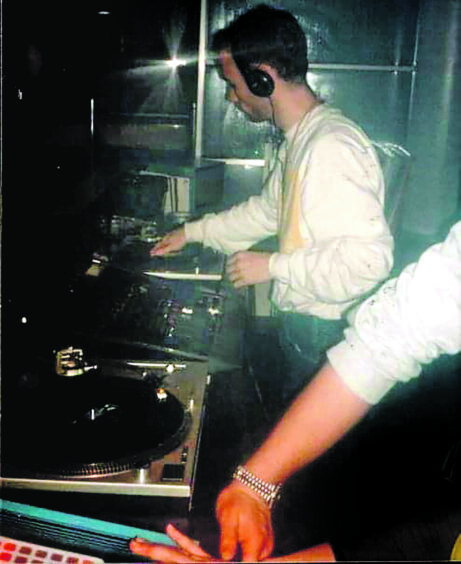


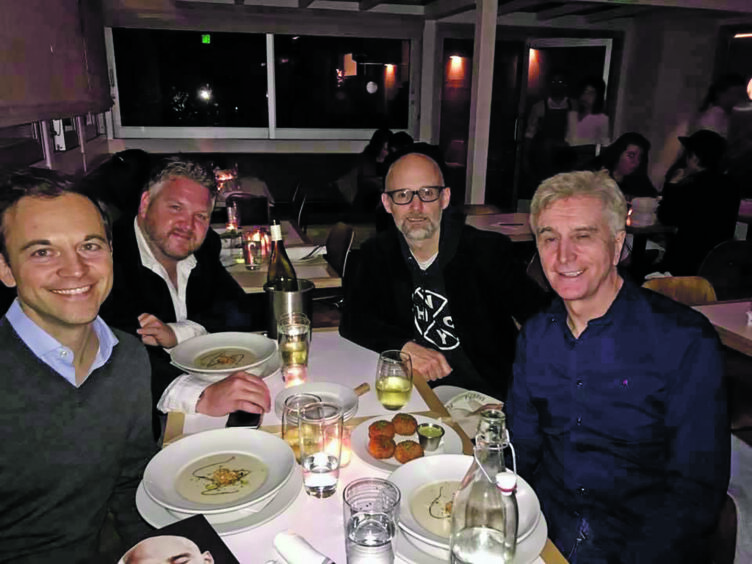
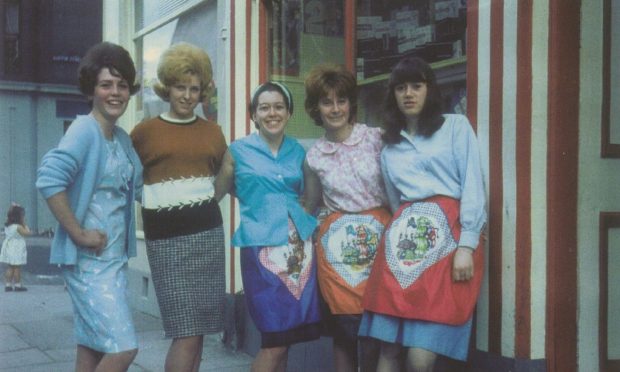
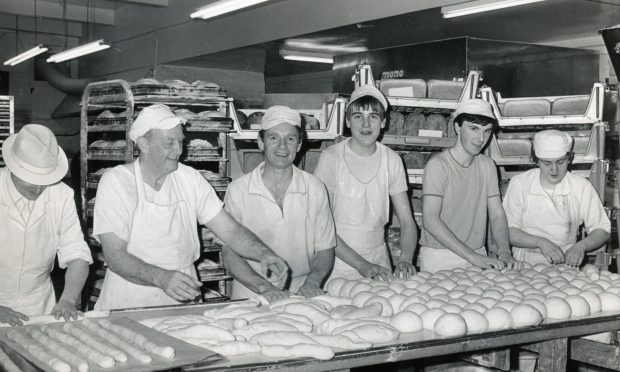
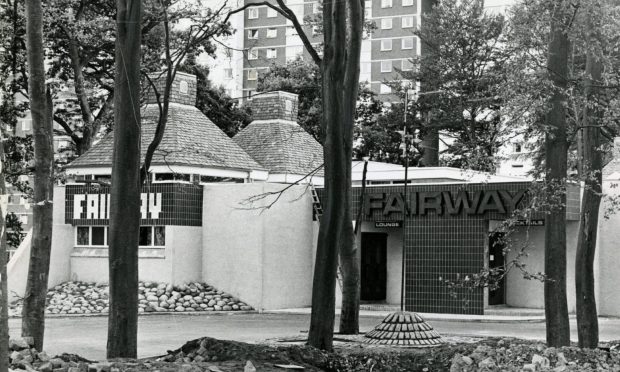
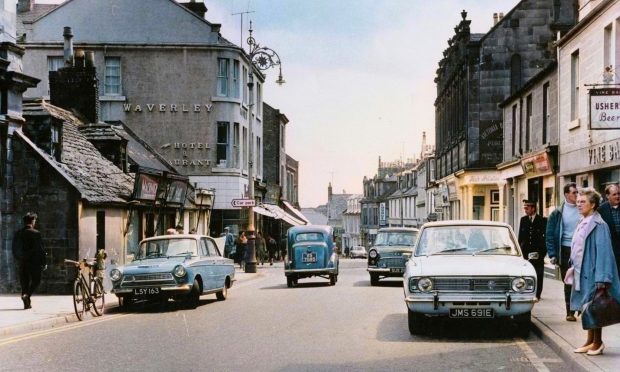
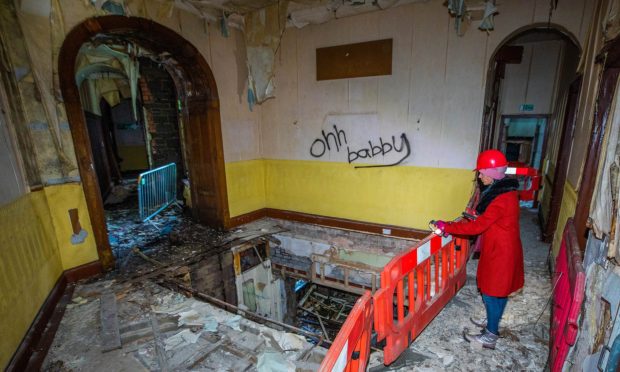
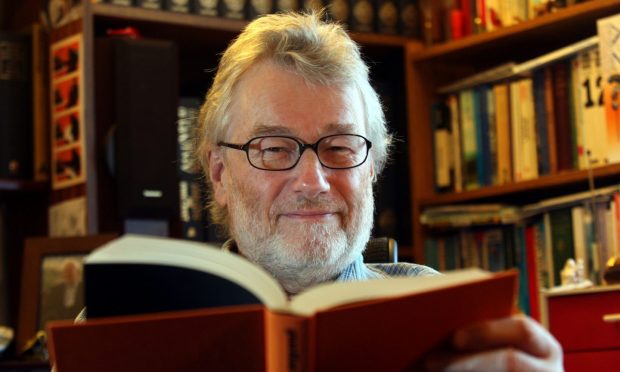
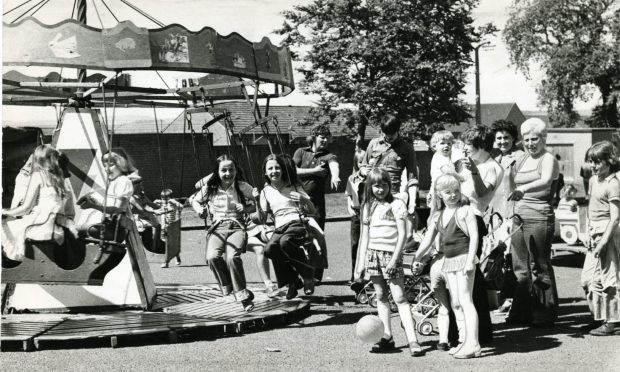
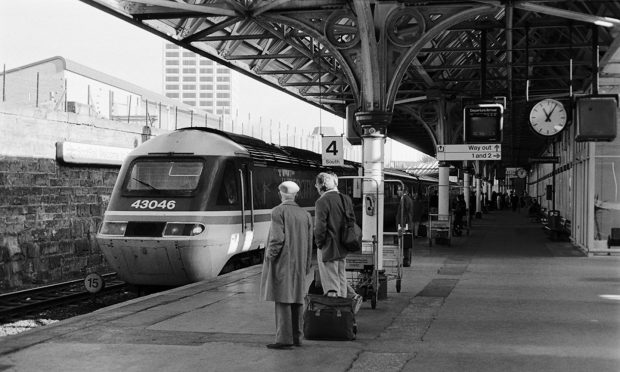
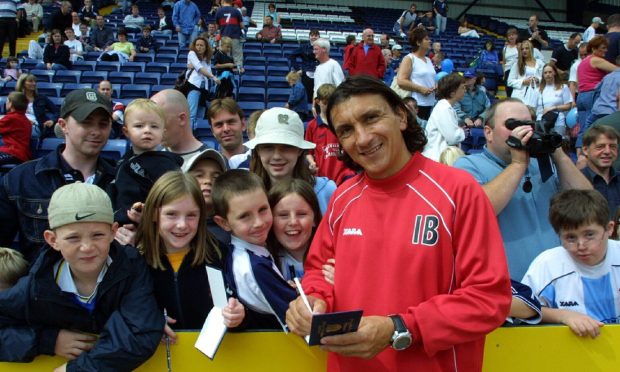
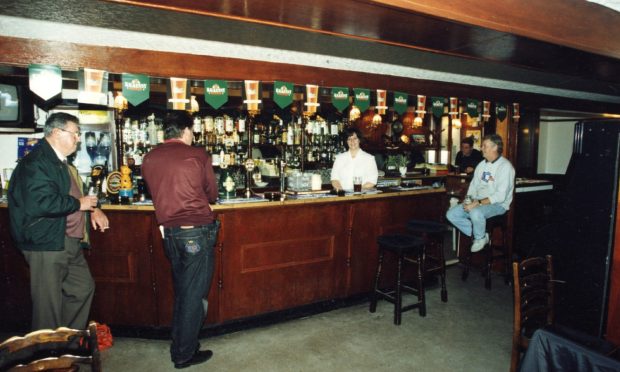
Conversation